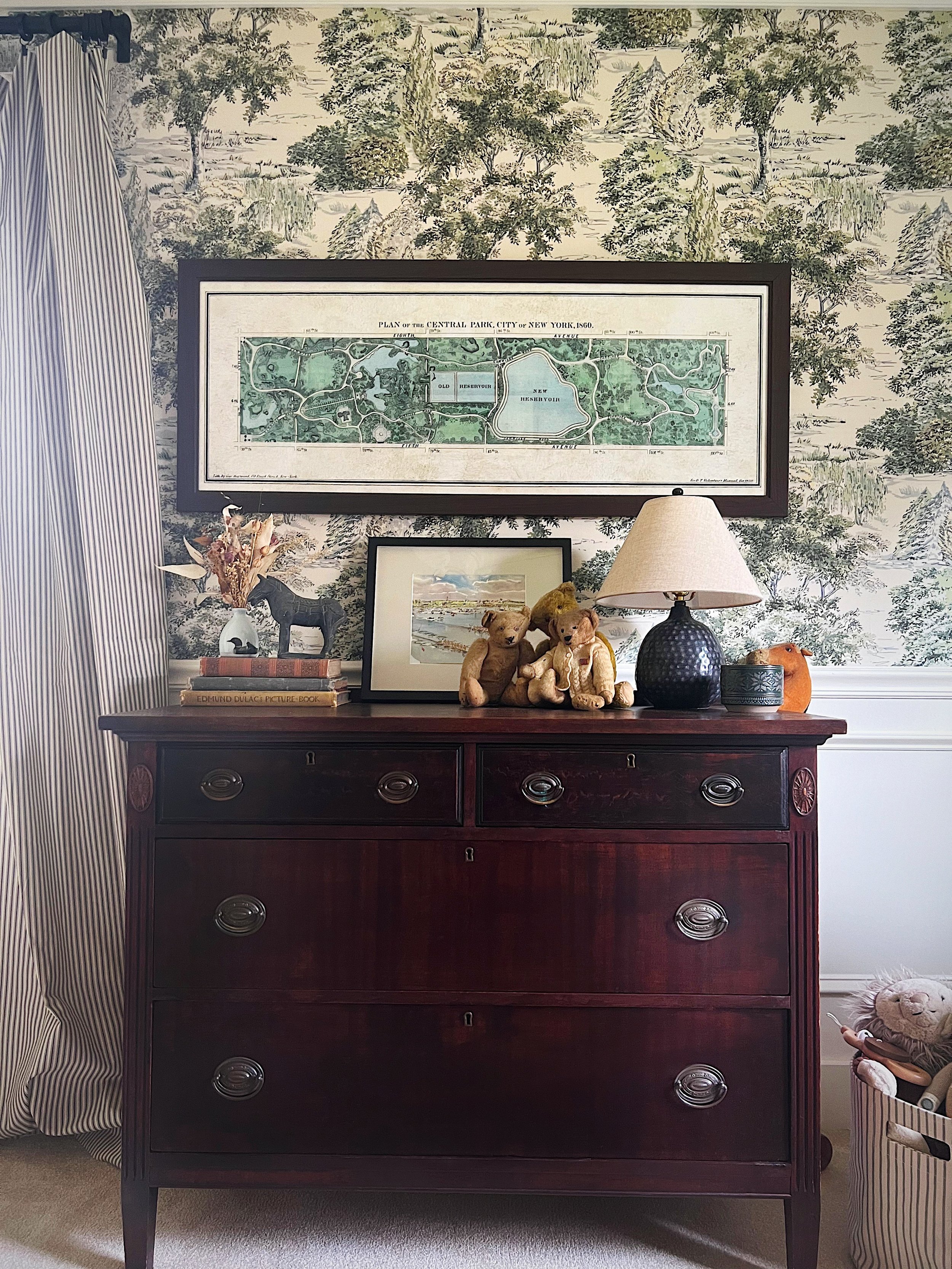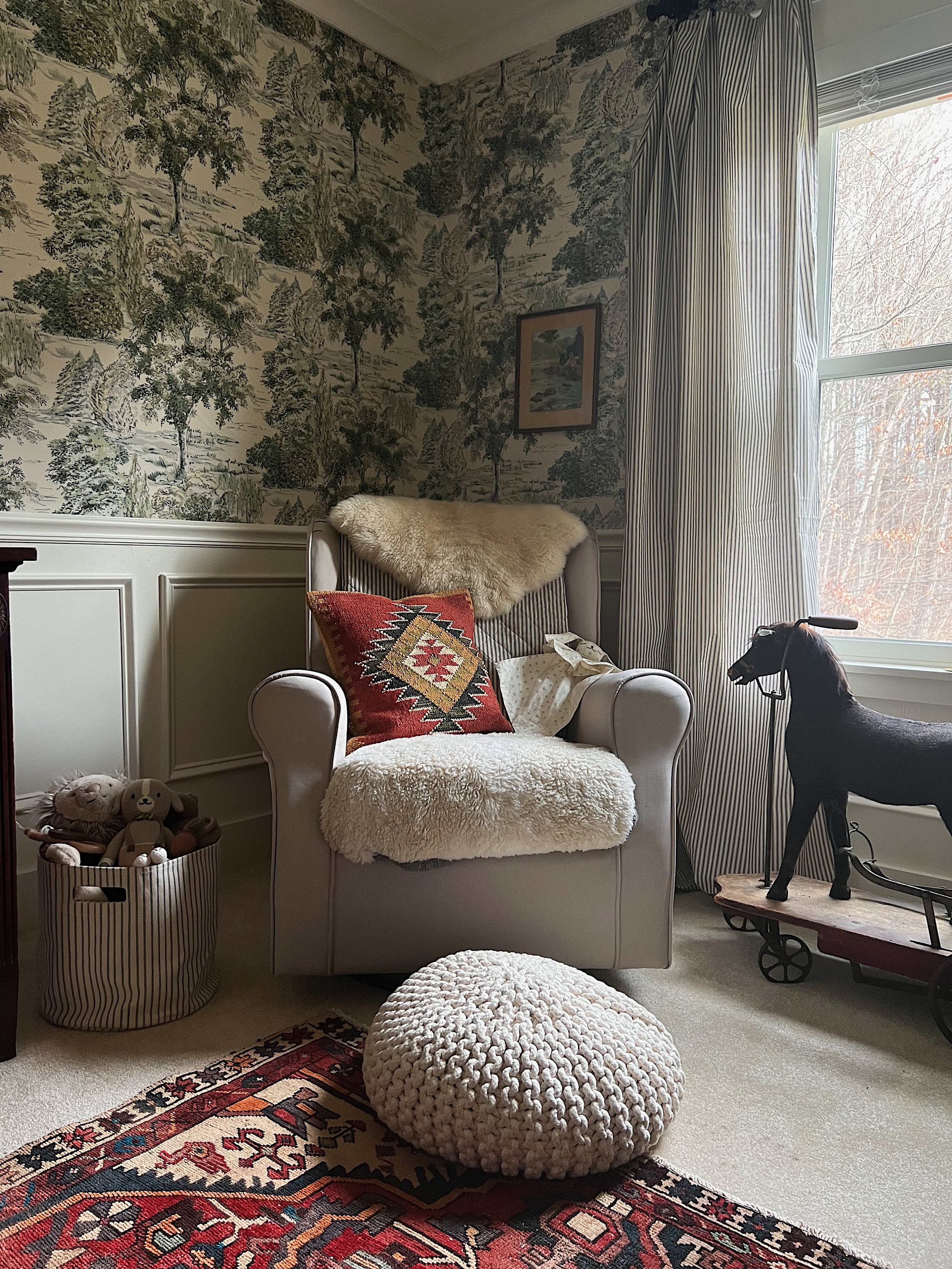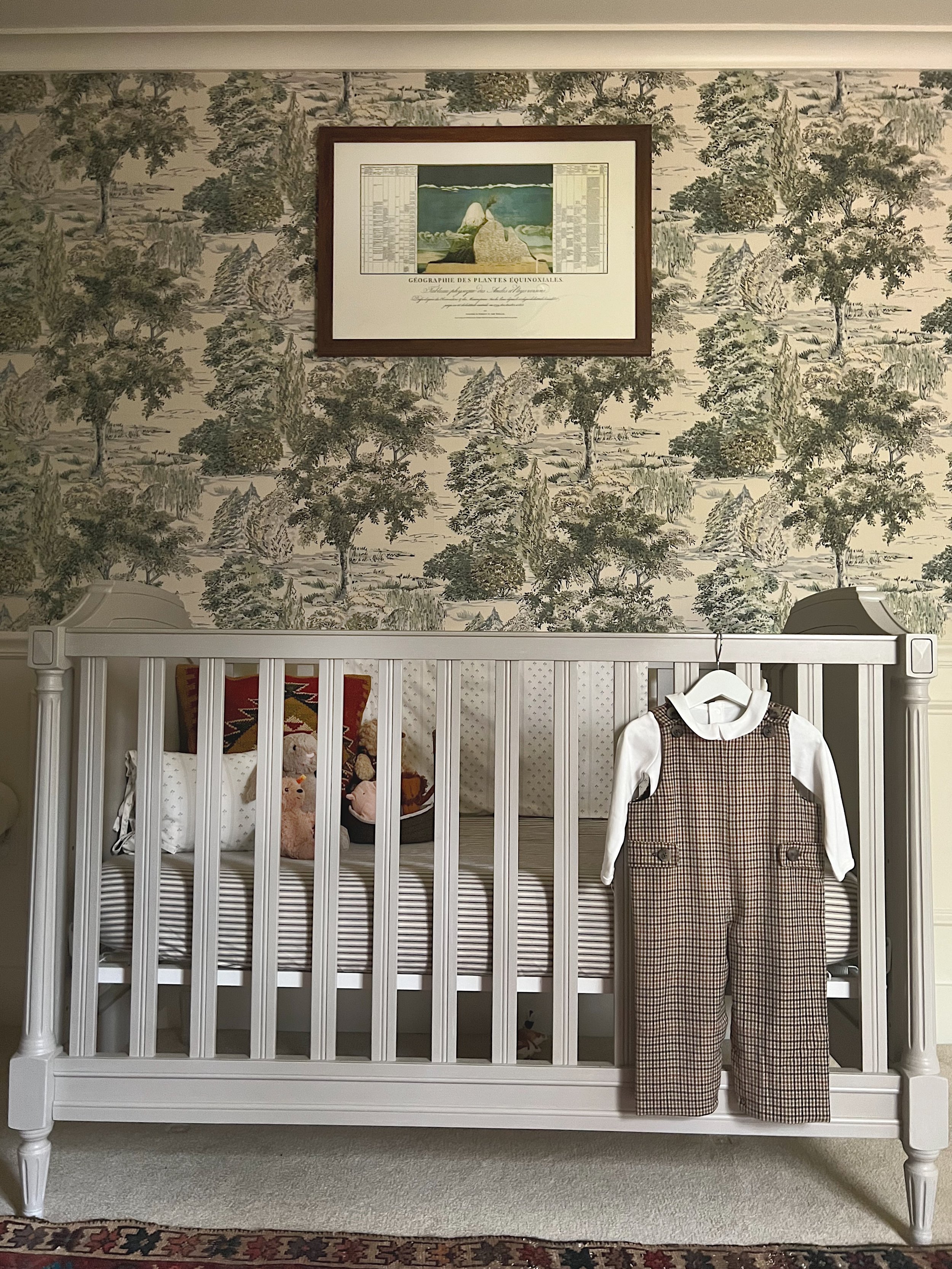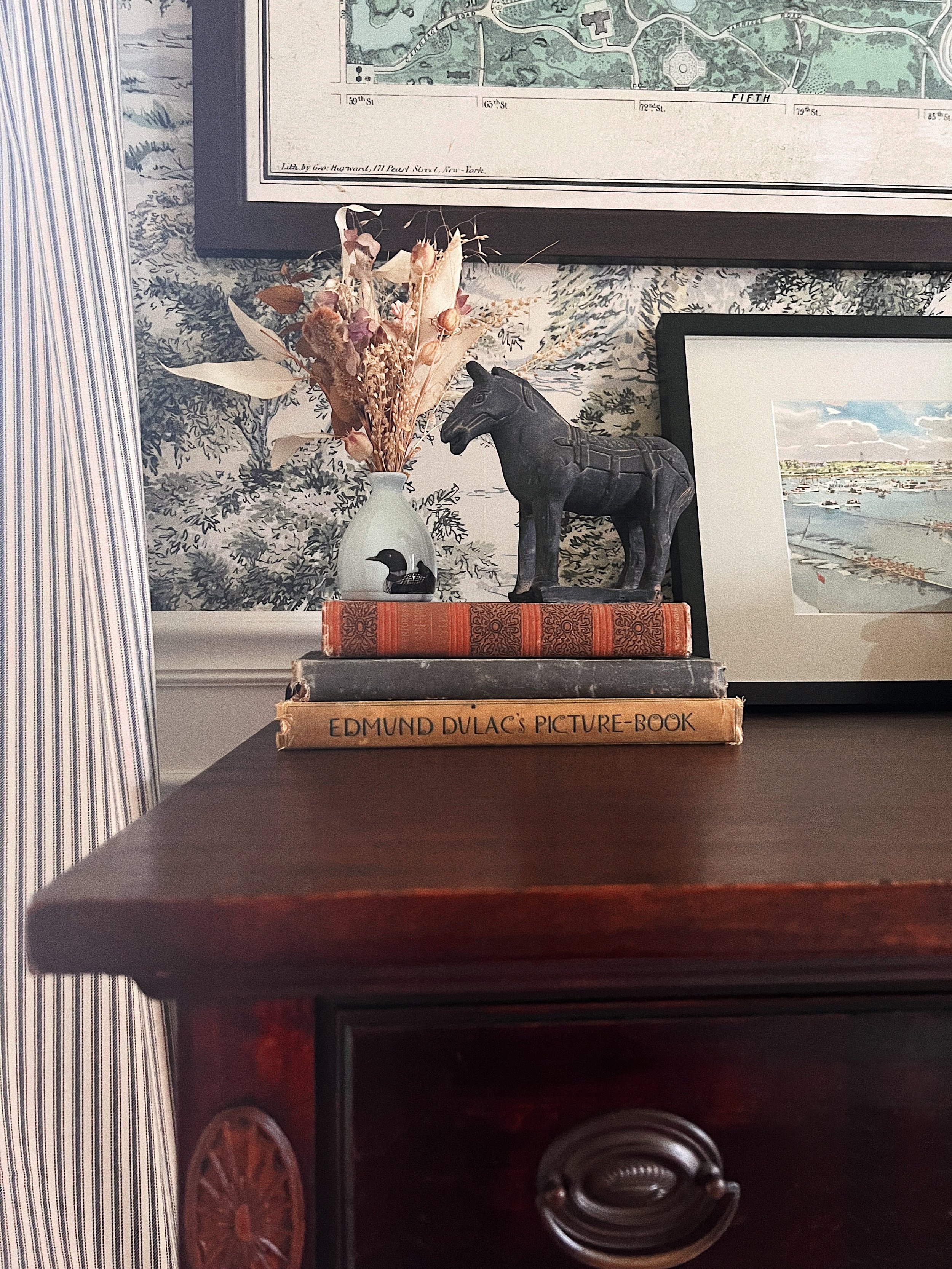Exploration of the Natural World through A Nursery Design
Some of the best design elements and inspirations come from an existing place: an unexpected piece of art, furniture, trinket, etc. In the case of our son Christopher’s nursery, his corner room offered views of the forest canopy. Because of a steep elevation change to the north of our home, both Christopher’s room and the children’s playroom both make you feel like you’re literally among the trees. In the spring, the birds perch on branches almost within an arm’s reach of our windows. Our first month living here we woke early to an owl perched on one of these branches, providing a sounding reassurance that we had made the right decision in leaving the city and finding our home Upstate down this old country road.





So with that, a focus on trees (a true love of mine) became this inspiration for this room. With a strong desire to design rooms for our children that can grow with their style as they mature, we steered away from a nursery design that would need to be updated in a few years. This decision to design a more mature space spares us from another project in the future by saving time and money, is more sustainable (less waste), and allows us to focus on one-time higher quality pieces that are intended to last through childhood.
We began this design by installing a simple chair rail and wainscotting that matched two other bedrooms we completed in our home. The continuation of this design creates continuity throughout the home, and adds value if we were ever to consider selling down the road - not anything that we’re planning, but I do try to prioritize renovation projects in this way (see our renovated kitchen).
Next, we painted the walls, trim and ceiling a custom cream, matched off of a William Morris wallpaper in our daughter Natalie’s bedroom. Again, the neutral color as a backdrop to the upstairs rooms creates continuity, not to mention a break from color and pattern. I’ve included the custom color code in the image below. This cream is lovely and I will use it time and time again. The color feels like a warm white and I have questioned its saturation and then I go back and watch the color difference documented during the painting process and am reminded of the rich, yet understated dimension added.
The wallpaper was our first experiment with a peel and stick, with this modern take on a toile from Potterybarn. The colors are calming, yet the pattern captivates the imagination. I recall staring for long bouts of time at a blue toile in my grandmother’s home when I was young, daydreaming about the magical place where that toile scenery may have taken place and the stories that transpired there. My hope is that these trees provide the same imaginative opportunity for our son.
To give the nursery a timeless feel, we used linens for the crib and rocker from Red Land Cotton designed from heirloom ticking from the 1920s and grown and manufactured in the United States. We purchased two king size flat sheets for our curtains - thanks Grit and Polish, although the company now sells fabric by the yard as well. We kept the fabric scraps with my plans to make pillows, a stuffed animal, or perhaps a few soft ornaments for the nursery tree at the holidays.
Antique rugs and accessories, dressers, artwork, and a trunk all provide depth and dimension to give the look a timeless feel. We inherited barely-used carpet in a soft cream tone when we purchased the house and chose to keep it until the kids get older. At that point, we hope to convert these floors to match the historic-inspired quarter-sawn oak through the rest of our home.
Often overlooked in children’s rooms, art presents an incredible opportunity to stir the imagination and leave an impression that may lay the foundation for a lifetime passion or hobby. Here, we played on exploration of the natural world. Locally inspired pieces included a set of botanical prints of pine cones with their botanical species names, a vintage fly fishing print from an old magazine, and another print of a rowing team on the water.
Two larger pieces were curated specifically for this space at the beginning of the design process. The first is a framed print of the original Central Park landscape design plan of Olmstead & Vaux from One Kings Lane. I love this piece for so many reasons: it’s insight into landscape design, the history behind Central Park, a dose of cityscape in our country home, and also because of my personal connection to this place. My first NYC apartment was a stone’s throw from Central Park and I ran here often, completing dozens of races with the NYRR in my twenties. The lady of the waters at Bethesda Fountain is a personal favorite as she celebrates clean water as a new technology in cities - the first time the lower and middle classes were given this luxury, a true milestone in the public health arena. Adjacent to her in the park is the Mall and Literary Walk, a long path of iconic, mature American Elms. Jamil brought me here the night that he proposed and my love of trees has only deepened. Sharing these stories with our children and how they connect to design choices adds depth to our home.
The second is an incredible print of Alexander von Humboldt’s Naturgemälde — his famous painting of nature. A mentor to Charles Darwin, Humbolt traveled globally from his home base in Germany. His work of art and science shows a visual representation of ecosystems as he documented at various elevation levels, a concept that he first explored at high elevations in South America . And if you’re a Humboldt fan like we are, be sure to read The Invention of Nature by Andrea Wulf to understand the tremendous impact he had. In many ways this book inspired this art piece, and thus this room altogether. Thank you, Andrea!
Details such as the antique Beatrix Potter figures passed down from my childhood and antique bears from Christopher’s great uncle’s collection provide a sense of timelessness and are a beautiful heirloom alternative to purchasing new, or plastic toys or decor as an alternative.
And there you have it! Sending loads of inspiration and positive vibes as you tackle your next project.
